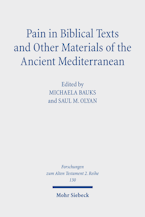- Home
- Christianity in Late Antiquity
- religion
- history
- Gregory of Nazianzus's Letter Collection

Gregory of Nazianzus's Letter Collection
Translated by Bradley K. Storin
Series: Christianity in Late Antiquity
248 Pages
- Paperback
- ISBN: 9780520304123
- Published By: University of California Press
- Published: December 2019
$34.95
Bradley Storin’s edition of Gregory of Nazianzus’ Letter Collection is an invaluable resource for English-speaking scholars of Gregory of Nazianzus and his 4th-century cultural context. This volume provides both a clear and readable translation of Gregory’s letters and a useful selection of background information and tools for further research. While this volume is not likely to appeal much to non-specialists, it could serve as both a useful entry point into Gregory of Nazianzus’ world and a source for extensive and specific study of Gregory.
The letter collection provided here (and the letter collection as it generally exists) is based upon a collection of letters curated by Gregory himself, though we only have indirect evidence of the original order. The three theological letters (101, 102, and 202) are thus omitted from this collection, as these were historically transmitted with Gregory’s orations rather than the letters. I agree with this decision in principle, although I wish that Storin would have included these letters in an appendix simply for the sake of having all of Gregory’s letters in English translation in one volume.
The volume begins with a short introduction that provides a biographical sketch of Gregory. Far more importantly, this introduction includes a short analysis of the letter collection provided in this volume. Storin describes the history and manuscript tradition and argues that letters 81, 241, 243, and 249 are not, in fact, authentic. Storin also explains his reasoning for rearranging the letters and not following the standard enumeration (which he usually refers to as the Maurist order/numbers). In short, the Maurist order is an attempted chronological arrangement of the letters, while Storin, following manuscript evidence and a few hints from Gregory’s own comments upon his letter collection, attempts to provide an arrangement close to Gregory’s original arrangement, which seems to have been organized prosopographically and thematically rather than chronologically.
This introduction is followed by a very useful prosopography. In addition to listing the letters in this collection under their recipients, Storin provides references to these figures in other writings of Gregory of Nazianzus and other patristic writers, as well as references to secondary sources that can provide more information. While the descriptions of the recipients are very brief (usually a concise sentence or less), this prosopography provides a basic orientation to Gregory’s recipients as well as guidance to tools for further study of these figures. Storin also provides a useful pair of tables that allow the reader to look up letters under either Storin’s order or the Maurist numbers, allowing the reader to find specific letters according to either system, as well as compare where the letters fall within each ordering.
The bulk of the volume, of course, is comprised of the letters themselves, translated into clear and lively English. These letters provide a gold mine of insights into Gregory’s life and character, as well as his late antique context. Storin does a good job of conveying the distinctive voice of Gregory of Nazianzus and reflecting the simultaneous eloquence and conversational style of these letters. Some readers may be annoyed by the change in order from the standard numbering, but I found the new order valuable for the purposes of understanding this letter collection as an intentional self-presentation on Nazianzen’s part. His selection of these letters is certainly meant to convey a certain impression of him, not the least of a person who has suffered unjustly at the hands of bishops and church councils while simply trying to serve the church.
There is a beguiling honesty and openness in these letters, a willingness on Gregory’s part to describe both his joys and sorrows, his successes and his failures. Anyone interested in Gregory as a person should spend some time in this letter collection. Storin also provides notes with helpful background information. The brevity of these notes is alternately useful and frustrating, as there were certainly some cases where a bit more additional information would have been appreciated. However, some of these limitations are the result of Storin’s effort not to simply repeat his earlier monograph on Gregory’s letters, Self-Portrait in Three Colors (University of California Press, 2019), a work that could certainly be read alongside the letter collection reviewed. On the whole, the notes serve as useful helps to understanding the basic background of the letters.
I commend this letter collection to English-speaking scholars interested in Gregory of Nazianzus and his late antique cultural context. It provides a clear and engaging translation of Gregory’s letters while also supplying important research tools and background information. The reordering of the letters contributes to reading these letters as a conscious self-presentation on the part of Gregory, and the complexity of this important figure comes through in the variety of letters contained in this collection. Storin has done English-speaking scholars of Gregory of Nazianzus a great service.
J. Caleb Little is a doctoral student in religion at Baylor University.
J. Caleb LittleDate Of Review:July 9, 2021
Bradley K. Storin is assistant professor of the history of Christianity in the department of philosophy and religious studies at Louisiana State University.











